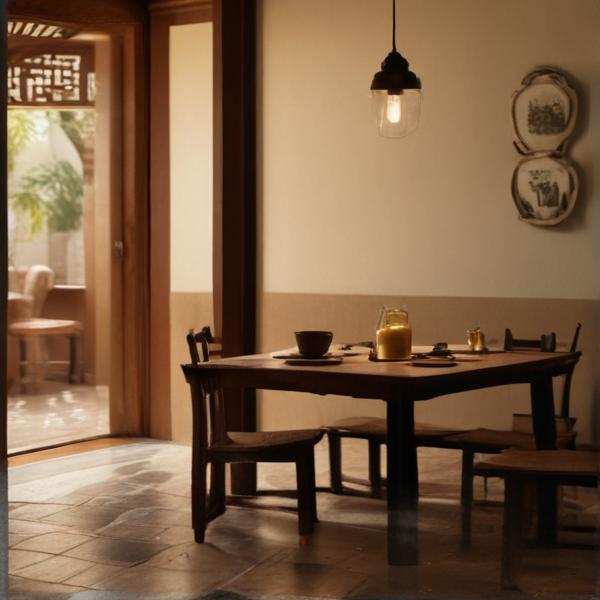基本信息 (Basic Information)
含义与用法 (Meanings & Usage)
中文核心释义 (Core Chinese Meaning): 高层的房屋或建筑,多指有两层及以上的楼房。
英文核心释义 (Core English Meaning): multi-story building, floor, storied building
象形意义 / 为何这么写 (Pictographic Meaning / Writing Rationale)
文言文释义 (Classical Chinese Meaning)
文言文中“楼”多指高大的建筑物,与现代意义相近。Similar to modern meaning; in Classical Chinese, '楼' usually refers to a tall building.
深入学习 (In-depth Study)
字源故事 (Origin Story)
字形演变 (Character Evolution)
常用词语和例句 (Common Words & Examples)
高楼 (tall building; high-rise)
城市里高楼林立。
Eng: Tall buildings stand in great numbers in the city.
写字楼 (office building)
他在写字楼里上班。
Eng: He works in an office building.
楼梯 (stairs; staircase)
我们走楼梯上去吧。
Eng: Let's go up using the stairs.
相关成语 (Related Idioms)
楼阁亭台
Meaning: pavilions and towers; grand and beautiful architecture
多语言翻译 (核心释义) (Translations (Core Meaning))
- French: bâtiment à plusieurs étages, étage
- German: mehrstöckiges Gebäude, Stockwerk
- Spanish: edificio de varios pisos, piso
- Italian: edificio a più piani, piano
- Portuguese: prédio de vários andares, andar
- Russian: многоэтажное здание, этаж
- Arabic: مبنى متعدد الطوابق، طابق
- Persian: ساختمان چند طبقه، طبقه
- Dutch: meerverdiepingsgebouw, verdieping
- Polish: budynek wielopiętrowy, piętro
- Vietnamese: tòa nhà nhiều tầng, tầng lầu
- Ukrainian: багатоповерхова будівля, поверх
视频学习资源 (Video Learning Resources)
通过以下链接在热门视频网站搜索 "楼" 的更多讲解:
Search for more explanations of "楼" on popular video sites:
- 在 Bilibili.com 搜索 "楼 字源 说文解字" (Search on Bilibili)
- 在 YouTube.com 搜索 "楼 character origin etymology" (Search on YouTube)
网络参考 (Web References for "楼") ()
网络内容摘要 (Web Content Summary):
楼的基本含义是“有两层或多层的建筑物”,常用来指楼房或楼阁。 “楼” mainly refers to a building with two or more floors, such as “building” or “pavilion”.
在字形起源上,“楼”字由“木”与“婁”组成。“婁”表示相勾相抱,形象地比喻古代木结构建筑中各层相连的特点。 The character’s origin combines “木” (wood) and “婁”, which suggests interlocking, reflecting how ancient wooden buildings were constructed with interlinked layers.
- 用法提示:“楼”常用于描述层数,如“一楼”、“二楼”,也可指有上层结构的车辆或船只,如“楼车”。 Usage note: “楼” is often used for floors (“yī lóu”, “èr lóu”: first/second floor), and can also refer to upper structures on vehicles or ships (“楼车”: ancient war chariot with upper deck).
- 易混淆点:“楼”与“楼阁”(高台上的房屋)、“阁楼”(房间上部的存储空间)等词相关,但不同于一般的“屋”或“房”。 Common confusion: “楼” is related to words like “楼阁” (pavilion) and “阁楼” (attic), but it is different from simple terms like “屋” (“house”) or “房” (“room”).
由于文化象征意义,古代“楼”常与权力、繁华、远眺等主题相关。 In Chinese culture, “楼” often symbolizes power, prosperity, and a high vantage point.
成语或常用搭配:如“高楼大厦”(tall buildings)、“登高望远”(ascend a building and gaze far into the distance)。 Related phrases: Examples include “高楼大厦” (tall buildings) and “登高望远” (to ascend a building to gaze into the distance).
楼的解释|楼的意思|汉典"楼"字的基本解释 - 漢典
(5) 又如:一楼;二楼 (6) 房间上部空间附设的可供藏物或住人的分层结构 [attic] 。如:暗楼;阁楼 (7) 建筑在高处的建筑物 [superstructure] 。如:楼子(楼阁);楼榭(高台之上的房屋,泛指楼房);楼堞(城楼上的矮墙)。又指有上层的车船,其上层也叫楼。如:楼车(古代战车。
汉字"楼"的起源、演变过程-汉字字源辞典
婁 ,既是声旁也是形旁,是" 摟 "的本字,表示两两相抱。 樓 ,金文 木,木房) (婁,即 " 摟 " ,抱 ),比喻木构房屋相勾相抱。 篆文 将金文字形中的 写成 。 造字本义:名词,古代土木建筑中两层或两层以上相互勾连的木房 。 隶化后楷书 将篆文字形中的 写成 ,将篆文字形中的 写成 。
更多图片 (楼 More Images) ()
